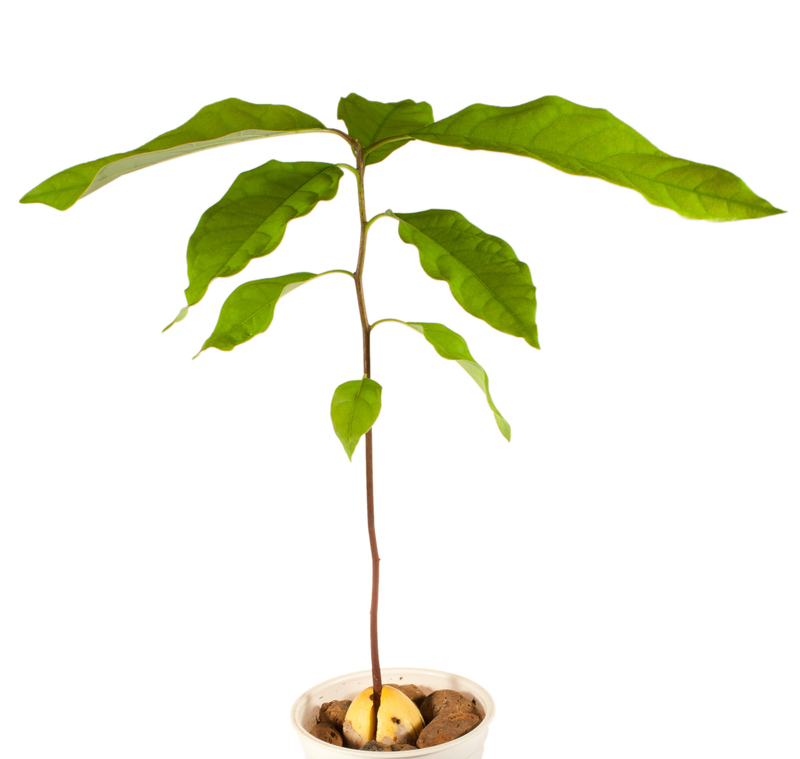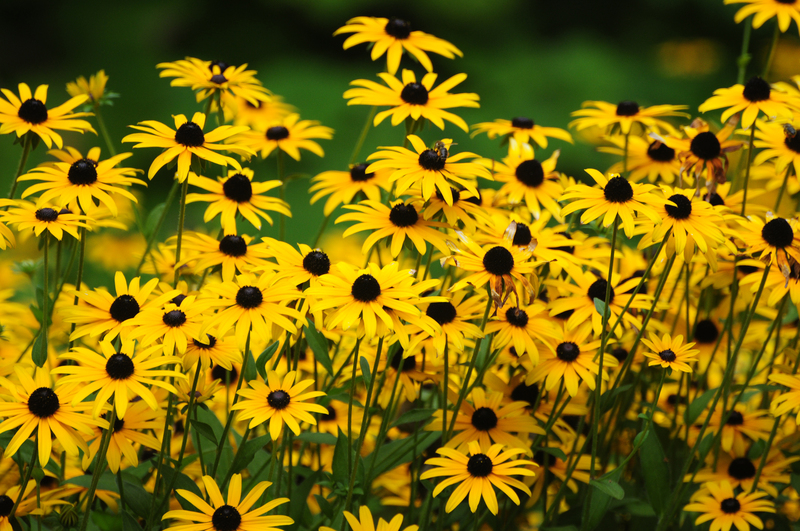Unlocking the Potential of Container Gardening
Posted on 26/06/2025
Unlocking the Potential of Container Gardening
Container gardening is transforming the way modern gardeners approach urban greening, edible landscapes, and ornamental displays. Whether you have a sprawling backyard or a compact balcony, the versatility of growing plants in containers unlocks opportunities for everyone. In this comprehensive guide, we'll explore the endless potential of container gardening, offering tips, insights, and creative ideas for beginner and seasoned gardeners alike.

What is Container Gardening?
Container gardening is the practice of growing plants exclusively in pots and other containers rather than directly in the ground. This method is ideal for urban dwellers, renters, or anyone with limited outdoor space. But its popularity goes beyond necessity - it offers unmatched flexibility, portability, and design options for all types of spaces.
Benefits of Container Gardening
- Space Optimization: Make the most of small yards, balconies, decks, and even windowsills.
- Mobility: Easily rearrange or bring plants indoors during inclement weather.
- Pest Control: Minimize weed and pest problems by isolating your plants.
- Soil Management: Use customized soil blends tailored for each plant's needs.
- Creative Expression: Experiment with color, texture, and levels by mixing containers and plant types.
Choosing the Right Containers
One of the first steps in unlocking the potential of container gardening is selecting suitable containers. Your choice will impact plant health, aesthetics, and ease of maintenance.
Common Types of Containers
- Terracotta Pots: Classic and breathable, but can dry out quickly.
- Plastic Pots: Lightweight, affordable, and moisture-retentive.
- Ceramic Pots: Vibrant designs add style but can be heavy and fragile.
- Fabric Grow Bags: Promote strong root systems and air pruning.
- Wooden Boxes: Natural look, good insulation, but may rot over time.
Essential Features for Garden Containers
- Drainage: Holes are crucial to prevent waterlogging and root rot.
- Size: Match container size to plant growth; too small can stunt development, too big may hold excess moisture.
- Material: Consider durability, insulation, and how much the pot weighs.
Tip: Repurposed containers such as buckets, old sinks, or baskets can add a quirky touch and are eco-friendly, just ensure they have proper drainage.
Soil and Fertilizing for Container Plants
Success in container gardens starts with the soil. Unlike in-ground beds, container plants are entirely dependent on the medium you provide. Use a high-quality potting mix designed for containers - never garden soil, which can compact and restrict roots.
Potting Mix vs. Garden Soil
- Potting Mix: Light, drains well, and retains necessary moisture.
- Garden Soil: Too dense; often harbors pests and diseases.
Fertilizing Strategies
Plants in pots need regular feeding since nutrients wash out with watering. Here are some options for keeping your container garden lush:
- Slow-release fertilizers: Incorporated at planting, they provide nutrients over time.
- Liquid feeds: Applied every few weeks to boost growth and flowering.
- Organic amendments: Compost and worm castings can be mixed into potting soil.
Monitor your plants for signs of deficiency such as yellowing leaves or poor growth and amend as needed for optimal health.
Unlocking the Full Potential: Choosing What to Grow in Containers
Virtually anything can be grown in containers if you select the right variety and container size. Here are popular choices for container gardening enthusiasts:
Edibles You Can Grow in Pots
- Herbs: Basil, mint, parsley, cilantro, thyme, and more.
- Salad Greens: Lettuce, spinach, arugula, and microgreens flourish in shallow bowls.
- Tomatoes and Peppers: Dwarf and patio varieties yield well in large pots.
- Root Vegetables: Carrots, radishes, and beets thrive in deep containers.
- Strawberries and Dwarf Fruit Trees: Perfect for hanging baskets and large planters.
Ornamental Plants for Instant Impact
- Annual Flowers: Petunias, marigolds, impatiens for non-stop color.
- Bulbs: Tulips, daffodils, and lilies bring seasonal flair.
- Succulents and Cacti: Low-maintenance and sculptural.
- Small Shrubs and Perennials: For year-round structure.
Pro Tip: Mix tall, spiky plants ("thrillers") with mounding ("fillers") and cascading ("spillers") varieties to create visually engaging containers.
Arranging and Displaying Your Container Garden
Unlocking the true potential of container gardening means thinking beyond just what's in the pot - it's about how you arrange and display your containers for function and beauty.
Creative Layout Ideas
- Vertical Gardens: Use wall-mounted pots, shelves, or stacked planters to save space and create living walls.
- Groupings: Arrange pots in clusters of odd numbers for natural appeal.
- Levels and Stands: Use plant stands, benches, or steps for a tiered effect.
- Color Coordination: Match or contrast your pots and plant choices for designer style.
- Pathway Edging: Line walkways or define spaces with linear arrangements of containers.
Experiment with different container shapes, heights, and materials to find a look that suits your home and garden personality.
Care and Maintenance of Container Gardens
Every garden needs some TLC - and container gardens are no exception. Regular maintenance ensures your potted plants remain healthy and visually pleasing.
Watering Wisely
- Frequency: Containers dry out faster than in-ground beds, especially in hot, windy conditions. Check daily in summer.
- Deep, Even Soaks: Water until it drains from the bottom to encourage deep roots.
- Mulching: Add a layer of bark, pebbles, or straw to reduce evaporation.
Dealing with Pests and Diseases
- Inspect Regularly: Check leaves and soil for pests like aphids, snails, or spider mites.
- Use Barriers: Copper tape or diatomaceous earth deters slugs and snails.
- Natural Sprays: Try insecticidal soap or neem oil for infestations.
Pruning and Deadheading
- Deadhead Spent Flowers: Promotes continuous blooming.
- Trim Back Overgrown Plants: Maintains shape and encourages bushier growth.
Refreshing Soil and Repotting
- Top Up or Replace Soil: Annually refresh with new potting mix for nutrient boost.
- Repot Root-Bound Plants: Move to a larger container if roots are circling the pot.
Sustainable Container Gardening Tips
As more gardeners look for environmentally conscious methods, container gardening shines with sustainable options:
- Use Organic Soils and Nutrients: Boosts soil health and reduces chemical use.
- Upcycle and Repurpose: Turn old household items into unique planters.
- Harvest Rainwater: Collect and use for watering instead of tap water.
- Select Drought-Tolerant Plants: Reduce water needs with hardy species.
- Compost: Make your own nutrient-rich amendment from kitchen and garden waste.
Embracing sustainable practices in your container gardening not only reduces your carbon footprint but also encourages biodiversity and fosters a healthier growing environment for your plants.
Troubleshooting Common Container Gardening Problems
Even the best container gardeners face challenges. Here's how to overcome some of the most frequent issues:
Leggy or Weak Growth
- Cause: Insufficient light or overcrowding.
- Solution: Move containers to a sunnier spot and thin out dense plantings.
Yellow Leaves
- Cause: Overwatering, underwatering, or lack of nutrients.
- Solution: Check soil moisture, adjust watering, and add fertilizer as needed.
Wilting Even With Adequate Water
- Cause: Root rot due to soggy soil.
- Solution: Ensure containers have drainage holes and use well-draining potting mix.
Poor Flower or Fruit Production
- Cause: Lack of pollination or nutrients.
- Solution: Hand-pollinate where necessary and regularly feed with balanced fertilizer.

Inspiring Container Gardening Ideas
Need a little inspiration for unleashing the full potential of your container garden? Try these creative project ideas:
- Theme Pots: Create containers based on one color, texture, or scent.
- Edible Walls: Use vertical planters to grow herbs and greens for a living pantry.
- Miniature Gardens: Craft fairy gardens or bonsai landscapes in shallow dishes.
- Seasonal Swaps: Rotate plants with the seasons for year-round appeal.
- Pollinator Gardens: Select nectar-rich blooms to attract bees and butterflies.
Final Thoughts: Unlock the Power of Container Gardening
Container gardening is much more than a solution for space constraints -- it's a gateway to creativity, sustainability, and year-round gardening pleasure. From growing fresh produce on your windowsill to designing lush, colorful displays, the possibilities are nearly limitless. With a thoughtful approach to containers, soil, plant selection, and care, anyone can unlock the potential of container gardening and turn the smallest space into a thriving oasis.
Embrace the freedom, flexibility, and wonder that container gardening brings, and let your imagination bloom!

